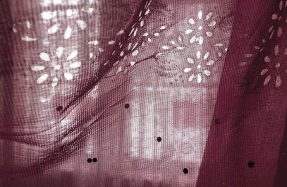The Desmology of Encounter


PETER SHAND
The eponymous Luke Willis Thompson is the first significant multi-work solo exhibition by the artist to be mounted in New Zealand. The three works in the exhibition represent a shift in his practice toward a concentration on moving image. That said, they refuse uniformity of media insofar as one is in 16mm, one 35mm and one digitally transferred. The particular media characteristics of each is, thereby, distinct. Further, the material qualities of each belie the apparent simplicity of characterising the exhibition as a suite of moving image projects. In this respect and while the recalibration of the practice is a key feature of the exhibition, these works are not so distant from his earlier sculptural, performative or objet trouvé pieces both in their heightened awareness of the effect engendered by material experience and their understanding of the complex interweaving physicalities of object, audience and site.
Site and, in particular, the operation of the art gallery as a place of encounter, is an explicit and persistent theme of Thompson’s practice. Previous significant projects, 2012/14ʼs inthisholeonthisislandwhereiam and 2015ʼs eventually they introduced me to the people I immediately recognised as those who would take me out anyway, for example, consciously rejected the primacy of the gallery as a vehicle of containment of aesthetic experiences by the way in which they either or both emptied out the exhibition space before inviting participating audiences literally to turn their backs on the institution and journey with each project.
Although not abandoned as a singular site of display in that manner, the Adam Art Gallery is precisely reconstituted so as to serve what are highly controlled experiences of each of the works presented. In an escalation of the gallery as black box, the entire, complicated architectural space of the gallery is sealed against ambient light. The entrance is re-formed as a narrow blockade, requiring both a deflected point of access to the exhibition spaces and a slowing moment of readjustment to the reduced light of their interior. External windows are built-out, blotting out exterior light and simultaneously sequestering artworks and audience both. The effect of this careful and deliberate spatial rearticulation is to contain and concentrate engagement, to require an intense and formal concentration on the
You’re reading a preview, subscribe to read more.
Start your free 30 days



